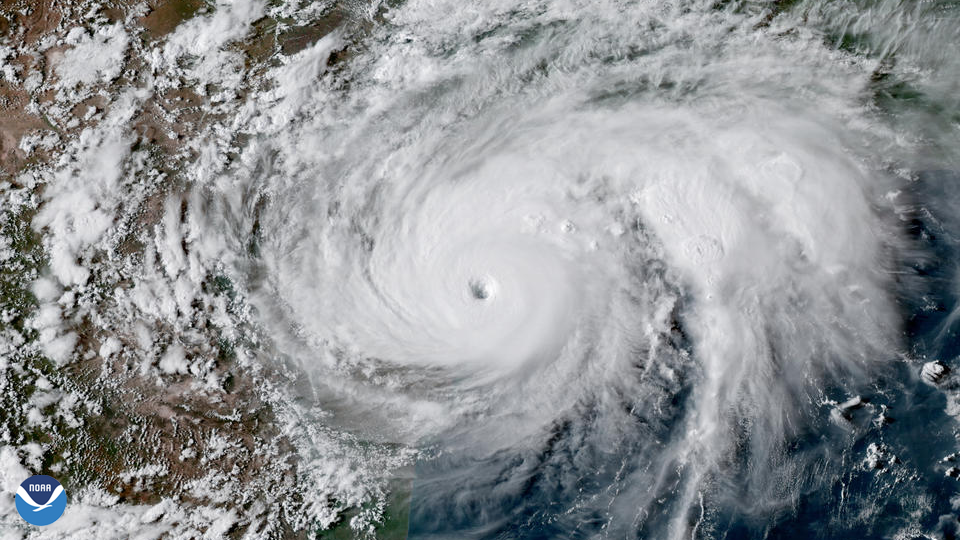
Section Branding
Header Content
Six Takeaway's About Tropical Cyclones And Hurricanes From The New IPCC Report
Primary Content

The federal government counts 52 tropical cyclones since 1980 that, with the cost adjusted for inflation, have caused, on average, $20 billion in damages in the United States. There were a record seven so-called “billion dollar” cyclones just last year.
With climate change helping produce a global horror film of extreme weather disasters this summer, and the peak Atlantic hurricane and Western fire seasons just arriving, a new landmark United Nations climate report by the Intergovernmental Panel On Climate Change offers the most thorough evaluation of the physical science associated with global warming so far, including the climate science of tropical cyclones.
Made public Monday, the IPCC report was written by 234 scientists from 66 countries and approved by 195 member governments of the IPCC.
To meteorologists, tropical cyclones are rotating, organized systems of clouds and thunderstorms that originate over tropical or subtropical waters. In the North Atlantic, central North Pacific and eastern North Pacific they are called hurricanes once wind speeds reach 74 miles per hour. Major hurricanes, categories three to five, pack wind speeds of 111 miles per hour to more than 157 miles per hour, and cause damage that ranges from devastating to catastrophic.
The IPPC authors did not do original research for their report. Rather, they assessed the state of knowledge and the confidence in it based on previously published scientific reports.
Hugh Willoughby, a professor at Florida International University in the Department of Earth and Environment who has been studying hurricanes for decades, said the IPCC report’s assessment of hurricanes reveals an unsurprising picture of evolving science.
“It is consistent with what we have thought for 40 years,” said Willoughby, who flew more than 400 missions into hurricanes as a meteorologist with the federal government and led the National Oceanic and Atmospheric Administration’s Hurricane Research Center from 1995 to 2002. “What is new is more and more (hurricane) events that fit the pattern, and that is what you would expect.”
To determine six, key takeaways about tropical cyclones and climate change from the IPCC report, Inside Climate News interviewed Willoughby and two academic researchers whose work was cited by the report’s authors: Colin Zarzycki, an assistant professor of meteorology and climate dynamics at Pennsylvania State University and Phil Klotzbach, a hurricane expert and research scientist at Colorado State University’s Department of Atmospheric Science.
More major tropical cyclones
Scientists cannot yet make claims with a high level of confidence about long-term trends in the frequency of all tropical cyclones.
But it is likely, the report found, that the percentage of major tropical cyclones—those reaching categories 3 to 5—increased over the last four decades. Scientists are confident in saying that there will be more frequent storms in the highest intensity categories of 4 and 5.
The Southeast United States, Central America and the Caribbean Islands have been hammered by very active hurricane seasons in recent seasons, including last year. In 2020, there were 30 named storms—the most on record and almost three times the typical number—fueled by warmer sea surfaces that scientists say were, at least in part, caused by climate change. This season, which runs through October, is also predicted to be very active.
The IPCC authors acknowledged the 2019 IPCC Special Report on Ocean and Cryosphere in a Changing Climate, which attributed “medium confidence” to the assertion of a human contribution to an increase in Atlantic hurricane activity since the 1970s. But, they concluded, “There still is no consensus.”
Looking back in time at tropical cyclone activity is tricky, in part because technology to identify and study cyclones hasn’t always been as good as it is now, Zarzycki said. Scientists probably missed some cyclones entirely before the 1970s, when the first satellites began monitoring the Earth, he added.
Wetter, windier tropical storms
Warmer air holds more moisture, and human-driven climate change is making tropical cyclones wetter. The authors found that, generally, storms with extreme daily precipitation are projected to intensify by about 7 percent for each 1 degree Celsius of global temperature warming.
The authors also expressed high confidence in projections that peak wind speeds in the most intense tropical cyclones—categories 4 and 5—will increase with increasing global warming.
Tropical cyclone intensity and the rates of rainfall act to further elevate storm surges, and rising seas from global warming will likely exacerbate the storm surge from future tropical cyclones.
Tropical storms are shifting north
In the North Pacific, tropical cyclones are reaching their maximum intensity farther north than before, potentially exposing areas that have no experience with tropical cyclones to a risk of dealing with them in the future. The report said this is partly explained by changes in global-scale tropical atmospheric circulation.
Zarzycki also said that warmer sea surface temperatures would be a contributing factor, because warmer water fuels hurricanes, keeping them going.
More explosive tropical cyclones
With warmer sea-surface temperatures, the frequency of storms that rapidly intensify has increased. The authors based that conclusion on research that examined tropical cyclone activity globally, while also citing the 2017 North Atlantic hurricane season specifically, which included three major hurricanes—Irma, Maria and Harvey—that went through a period of rapid intensification. “These types of seasonal events will intensify” with human-aided warming, the IPCC authors wrote.
This story comes to GPB through a reporting partnership with Inside Climate News.

